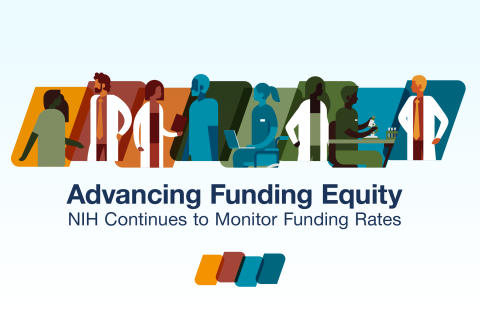
Today, Mike Lauer, M.D., and I have published our annual update on NIH’s progress in closing the Ginther Gap. Now a tradition since our publication of fiscal year 2021 data, we discuss research project grant and R01 funding rates by race and ethnicity in one blog and K award funding rates in another.
We think it is important to continue to focus on the data, as NIH has developed numerous programs to address the disparities identified by Ginther et al. since the publication of their seminal article in 2011. One of the key outcomes of that report was the establishment of my role, Chief Officer for Scientific Workforce Diversity.
As you will see from the two blogs, gaps remain in funding rates by race and ethnicity for research project grants (RPGs) and R01s, although there may be a trend to those gaps becoming smaller. One of the challenges is that the numbers of applicants are very small, and small variations in numbers year-to-year can lead to seeming progress or lack thereof when examined narrowly. However, we are encouraged by the overall trends, particularly the trends in K award funding rates. K awards often presage receipt of significant RPG support.
What accounts for the trends we may be seeing? It is unclear.
Over the last 13 years since the release of the Ginther report, NIH has initiated numerous initiatives to foster diverse perspectives in science—not the least of which has been the Common Fund Diversity Program Consortium (DPC). As reported at the most recent Advisory Committee to the Director meeting, the DPC has been engaging very early career scientists in the pathway to success. However, that path is long and often tortuous, and thus, the full impact of that intervention won’t be seen until the years to come.
Notably, every NIH Institute and Center has developed training programs to foster diverse perspectives in science, notably led by the National Institute of General Medical Sciences. And the recently launched Faculty Institutional Recruitment for Sustainable Transformation (FIRST) initiative, targeting early career faculty who have an interest and commitment to DEIA, may contribute to greater diversity among NIH R01 recipients as these faculty, many of whom may come from diverse backgrounds, become successful. NIH also developed the UNITE initiative to accelerate progress in equity, with the UNITE Progress Reports from 2021–2022 and 2023–2024 detailing outcomes thus far.
What does this mean for the future?
Clearly, to benefit from the full range of talent available within the United States and foster creativity and innovation in science, we need as broad a range of voices as possible. To this end, one of the markers that we will continue to follow is equity in receipt of NIH RPG and R01 funding. NIH, of course, does not fund based on demographic characteristics, and those data are not available to reviewers during their deliberations. However, we will continue looking at the data retrospectively to determine whether we are achieving equity and evaluating our programs and policies to be assured that there are no barriers to everyone being at the table.
As the COSWD team notes, great minds think differently—and we need those great minds to achieve great things.

